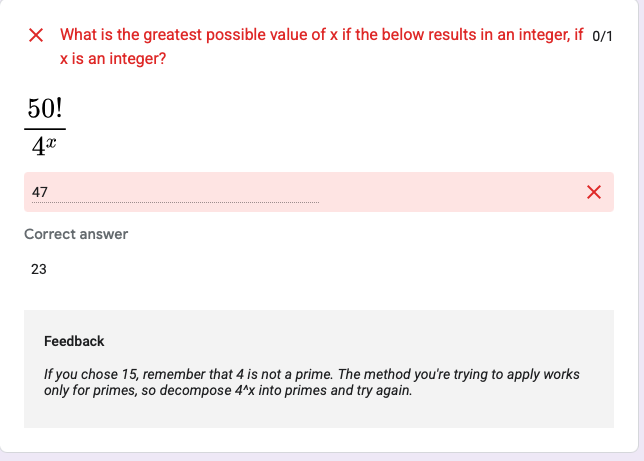I would appreciate your explanation for this particular question from the GRE Quant Foundation Assessment Test (Arithmetic).
My calculations were as follows: 50/2 = 25; 50/2^2 =12; 50/2^3=6; 50/2^4=3; 50/2^5=1 . So in total 25+12+6+3+1 = 47. Why is the answer 23?

Thanks for your help!